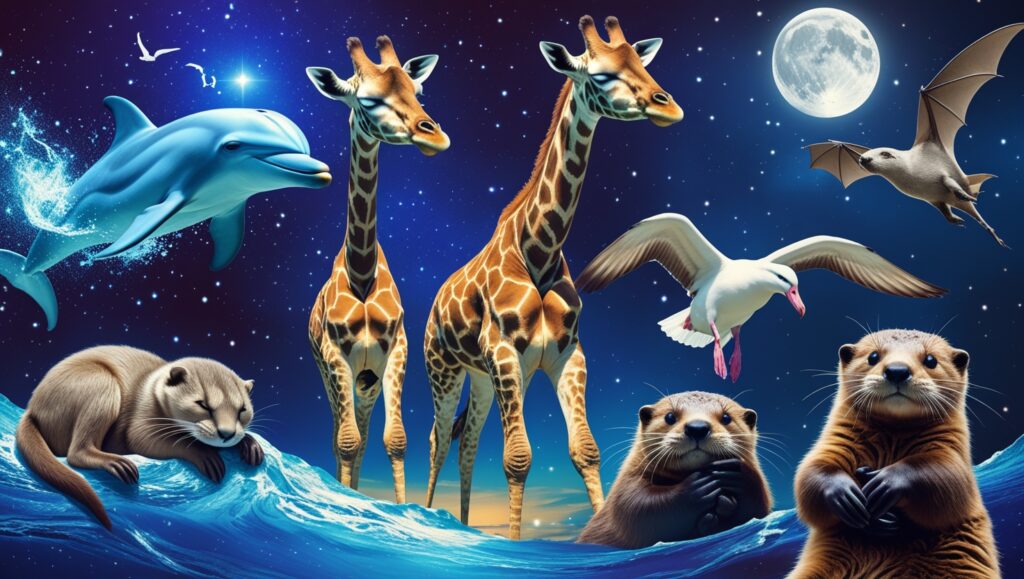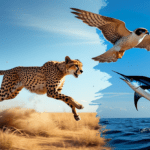When we think about sleeping, we usually imagine a comfy bed, a warm blanket, and a peaceful rest. But in the animal kingdom, sleeping can look very different! Some animals nap while flying, others sleep standing up, and a few don’t sleep much at all. Let’s dive into the fascinating world of unusual animal sleeping habits that will leave you amazed!
Dolphins: Half-Asleep and Fully Alert
Dolphins are marine mammals that have a unique way of sleeping called unihemispheric slow-wave sleep. This means they only let half of their brain rest at a time while the other half stays awake. Why? Because they need to keep swimming to breathe and stay safe from predators. Imagine being able to nap and stay alert at the same time—pretty cool, right?
Fun Fact #1: Dolphins take mini-naps that last only a few minutes, but they do this several times a day, adding up to about 8 hours of rest.
Giraffes: Masters of Power Naps
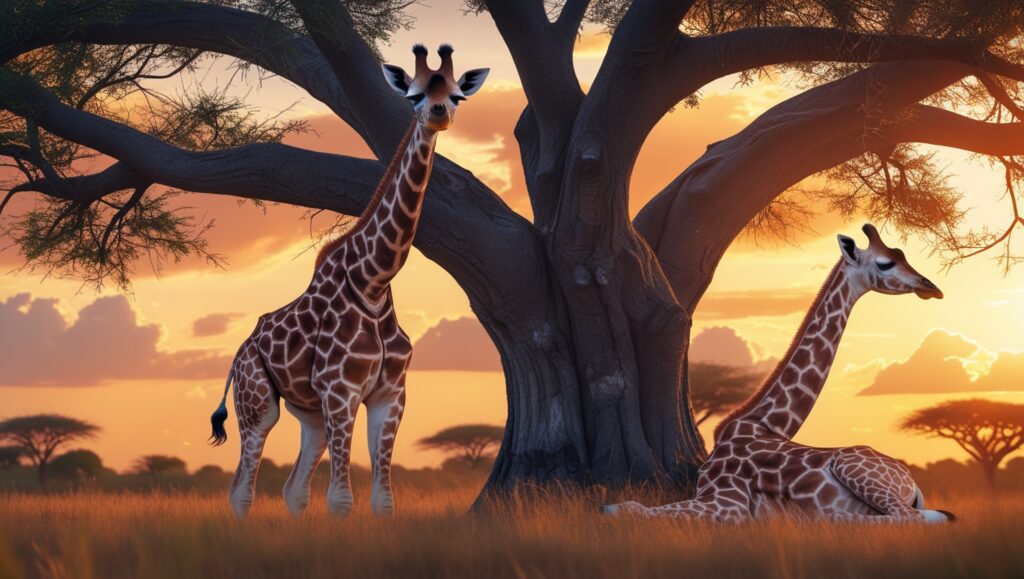
Tall, graceful giraffes are known for their short sleeping schedules. In the wild, they sleep for just 30 minutes to 2 hours per day, and even this is broken up into short naps. Giraffes often sleep standing up to stay ready to escape predators. However, when they feel completely safe, they might sit down, curl their long necks over their bodies, and drift off.
Why so little sleep? Giraffes need to stay vigilant because predators like lions are always lurking. Their towering height also makes getting up quickly a challenge, so they’d rather stay upright and alert.
Albatrosses: Sleeping on the Wing
Imagine dozing off mid-flight! Albatrosses, magnificent seabirds with wingspans of up to 11 feet, can sleep while gliding through the air. Scientists discovered that albatrosses take tiny naps during long flights over the ocean. These naps can last just a few seconds, but they’re enough to recharge these expert fliers.
Fun Fact #2: Albatrosses can stay in the air for weeks without landing, covering thousands of miles while napping on the go.
Sea Otters: Holding Hands While Snoozing
Sea otters have one of the cutest sleeping habits. They float on their backs in the water, often wrapping themselves in kelp to avoid drifting away. Even more adorable, they sometimes hold hands with other otters while they sleep to stay together as a group. This social behavior not only keeps them safe but also strengthens their bond.
Fun Fact #3: Sea otters have a built-in waterproof fur coat that keeps them warm while sleeping in chilly waters.
Horses: Dozing Standing Up
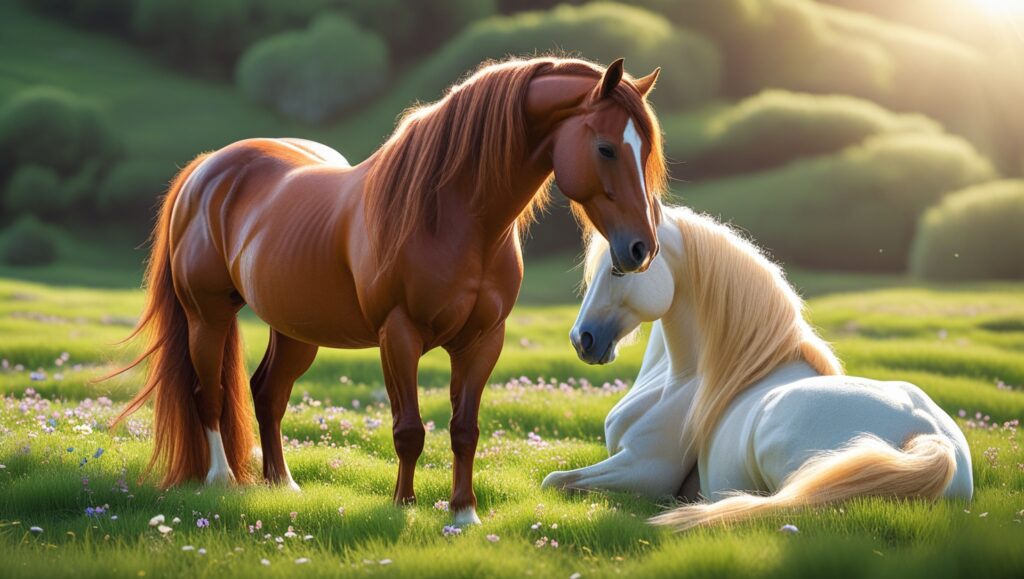
Horses are well-known for their ability to sleep standing up. Thanks to a unique locking mechanism in their legs called the stay apparatus, they can rest without collapsing. This helps them remain alert and ready to bolt if danger arises. However, horses do need to lie down occasionally for deep REM sleep, but they only do this for short periods.
Frogs: Frozen Sleepers
Wood frogs have a bizarre way of “sleeping” during winter. Instead of hibernating in a cozy burrow, they let themselves freeze! Their bodies stop functioning, and their hearts stop beating. Yet, come spring, they thaw out and hop away as if nothing happened. This remarkable adaptation helps them survive freezing temperatures.
Fun Fact #4: Up to 70% of a wood frog’s body water can turn to ice during its frozen state.
Sharks: Always on the Move

Some species of sharks, like the great white, have to keep swimming even when they sleep. Why? Because they need to force water over their gills to breathe. Scientists believe sharks enter a state of rest while their bodies keep moving automatically. It’s like sleepwalking—but underwater!
Bats: Hanging Around
Bats sleep upside down, clinging to ceilings or tree branches with their claws. This unique position helps them stay safe from predators, and it’s also the perfect launchpad for flight. While some bat species can snooze for up to 20 hours a day, they’re incredibly active and agile during their waking hours.
Fun Fact #5: The little brown bat, a common species, can sleep longer than any other mammal—up to 19 hours a day!
Penguins: Huddling for Warmth
Emperor penguins have a special way of sleeping in their freezing Antarctic home. They huddle together in massive groups to share body heat, taking turns being on the chilly outer edge. Penguins nap for short periods throughout the day and night, ensuring the whole group stays warm and safe.
Snails: Extreme Nappers
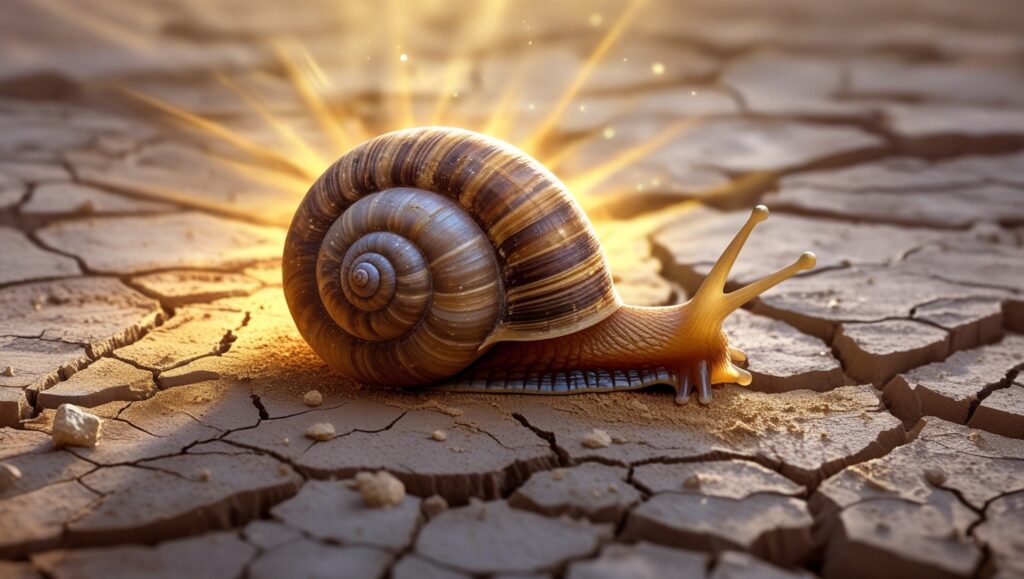
Some snails take sleeping to a whole new level. When conditions are tough, like during a drought, they can go into a deep sleep that lasts for up to three years! This state, called estivation, helps them survive until the environment improves.
What Makes These Habits So Fascinating?
The animal kingdom never fails to amaze us with its incredible diversity. From dolphins that sleep with half their brain to wood frogs that freeze solid, these unique sleeping habits highlight how animals adapt to survive in their environments. Each species’ method of rest is perfectly tailored to its needs, proving that there’s no one-size-fits-all solution to getting a good night’s sleep.
Next time you feel like skipping sleep, remember these fascinating creatures. They might inspire you to appreciate your cozy bed a little more!

